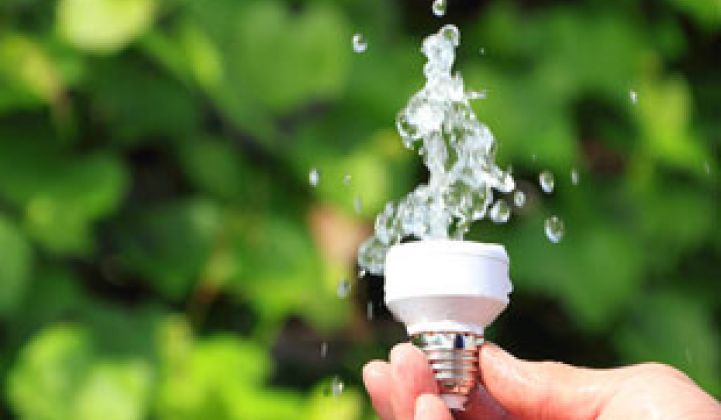California has ambitions for a clean energy future and must plan for water scarcity. According to a new study, the two efforts must be seen as one.
Water and energy consumption are not always fully considered as two parts of the same issue, whether in building new power plants or implementing efficiency programs. It takes a lot of water to produce electricity from most of the generation sources used today. It also takes a lot of energy to pump, deliver and clean the water we use every day.
Increasingly, the energy-water nexus cannot be ignored.
A study from the California Energy Commission found that water efficiency improvements could save as much energy as some of the existing energy-efficiency programs in the state, but at about half the cost, according to a new report from the Pacific Institute. Another study from the Pacific Institute found that water conservation measures that saved 320,000 acre-feet annually could also save 2.3 billion kilowatt-hours of electricity and 87 million therms of natural gas.
“Coordinating programs can be an important tool to meet efficiency goals, allowing the state to meet critical policy objectives and saving Californians’ money,” Heather Cooley, co-director of the Pacific Institute Water Program, said in a statement.
The new report, Water-Energy Synergies: Coordinating Efficiency Programs in California, surveyed water and energy professionals in California and found that limited or inconsistent funding in the water sector was the most significant barrier to coordinated efficiency programs in the state.
Other top barriers included limited staff time, water-related pricing policies, insufficient guidance about how to equitably allocate costs and benefits among project partners, and a lack of established relationships between potential water and energy partners.
The study found that water utilities, on average, invest less than their electric brethren in efficiency programs. Another problem is, of course, regulation. The CPUC dictates that ratepayer funds can only go to programs that benefit ratepayers. For example, the study notes that Southern California Edison cannot claim credit for energy savings that may accrue to the Department of Water Resources (DWR) because less water is pumped through DWR facilities.
Another regulatory issue is that water efficiency means less money coming into water companies, and therefore less money to upgrade infrastructure. Like electric utilities, water utilities need rate designs that encourage efficiency while bringing in enough money to keep the system properly functioning.
It Can Be Done
Despite the barriers, there are a few efforts underway to coordinate programs in California. After years of separate programs, Pacific Gas & Electric and several Bay Area water utilities developed a single high-efficiency clothes washer program. Before the merger, customers would need to fill out two applications to receive rebates and then would receive two separate checks.
Pacific Gas & Electric administers the program, which is particularly beneficial to smaller utilities that do not have the capacity to offer such programs. With PG&E running the program, the cost of each rebate for the water utility has been cut nearly in half, falling from $18 to $10.
The San Diego County Water Authority (SDCWA) and San Diego Gas & Electric (SDG&E) have had multiple joint efficiency programs and recently piloted a landscape water efficiency program. Although the water savings were significant, “One lingering question is how energy savings will be calculated,” the study authors wrote.
Even with regulatory innovation and the proven methodologies to calculate savings, “several respondents raised concerns about the ability to create a demand for these types of program, or for efficiency programs in general,” the study authors added. But the case studies show that the programs, such as the high-efficiency clothes washer program, are very popular.
There is still a lot of work that needs to be done, but there are also some concrete starting points that can help utilities in California, and elsewhere, address barriers to implementing joint programs.
Here are nine recommendations from the Pacific Institute to get started:
- Utilities should consider designating at least one staff member as the lead for pursuing water-energy program opportunities.
- Water and energy utilities should start by discussing how existing programs and offerings might be coordinated.
- Water utilities should explore ways to leverage some of the new statewide energy efficiency programs that are designed to achieve deep, comprehensive energy savings in California.
- Utilities should seek ways to streamline offerings to customers through better coordination, especially for audits.
- Utilities should evaluate whether using a third party to administer the program could reduce the burden on staff time.
- Water utilities should address long-term water savings and revenue stability as part of their best management practices.
- State agencies, including the CPUC and CEC, should develop guidelines for allocating water, energy, and cost savings among project partners.
- Utilities should consider adopting standard agreements to facilitate the coordination of existing programs and the development of new programs.
- Utilities, trade organizations, and non-governmental organizations should help improve communication and networking opportunities between water and energy utilities in the same region.



